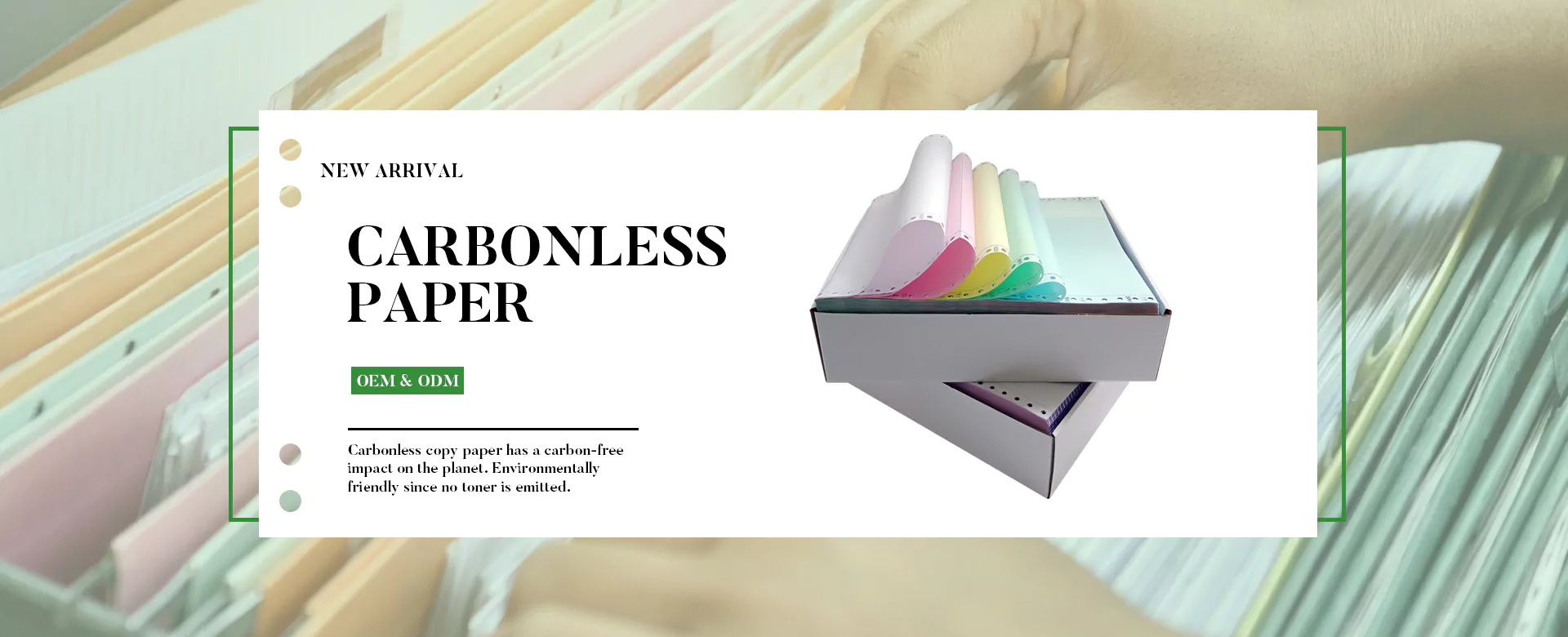Carbonless copy paper, often referred to as NCR (No Carbon Required) paper, is a type of coated paper designed to transfer information written on the top sheet onto subsequent sheets without the use of carbon paper. This innovative paper system has revolutionized the way businesses handle documentation, providing a clean, efficient, and eco-friendly alternative to traditional carbon paper. This blog delves into the composition, functionality, benefits, and applications of carbonless copy paper.
Composition and How It Works
Carbonless copy paper comprises multiple layers, each with a special coating. The top sheet (CB – Coated Back) has a coating on the back that contains micro-encapsulated dye or ink. The subsequent sheets (CF – Coated Front) have a coating on the front that reacts with the dye or ink from the CB sheet. There can also be intermediary sheets (CFB – Coated Front and Back) that have both types of coatings to facilitate transfer between multiple sheets.
When pressure is applied to the top sheet by writing or typing, the microcapsules break, releasing the dye. This dye reacts with the clay on the surface of the subsequent sheet, producing a copy of the original writing. This process can create multiple copies in a single action without the mess and inconvenience of using carbon paper.
Types of Carbonless Copy Paper
Carbonless copy paper comes in various forms to suit different needs:
- 2-Part Paper: Consists of two sheets – a top sheet (CB) and a bottom sheet (CF).
- 3-Part Paper: Includes three sheets – a top sheet (CB), a middle sheet (CFB), and a bottom sheet (CF).
- 4-Part and More: For more complex documentation needs, additional CFB sheets can be added to create 4-part, 5-part, or even 6-part forms.
These configurations enable businesses to create multiple copies of a document in one go, with each copy serving different purposes, such as record-keeping, customer receipts, and internal tracking.
Benefits of Carbonless Copy Paper
It offers several advantages over traditional carbon paper:
- Clean and Convenient: Unlike carbon paper, which can smudge and leave residues, carbonless copy paper provides clean copies without any mess.
- Eco-Friendly: Carbonless paper eliminates the need for separate carbon sheets, reducing waste and environmental impact.
- Cost-Effective: It streamlines the documentation process, saving time and reducing the need for multiple printing operations.
- Improved Accuracy: Since all copies are created simultaneously, the chances of errors are minimized.
- Versatility: It can be used in various applications, from invoices and receipts to contracts and forms.
Applications of Carbonless Copy Paper
It is widely used across different industries due to its versatility and efficiency. Some common applications include:
- Invoicing and Receipts: Businesses use carbonless copy paper to generate customer invoices and receipts, ensuring both parties have a copy for their records.
- Order Forms: Retailers and suppliers use it for order forms, ensuring that all involved parties have accurate records of the transaction.
- Contracts and Agreements: Legal documents, such as contracts and agreements, often use carbonless paper to provide each party with a signed copy.
- Medical and Healthcare: Medical professionals use it for prescription pads, patient records, and other forms to maintain accurate documentation.
- Service and Delivery: Service providers and delivery companies use carbonless forms to track orders, deliveries, and service calls efficiently.
- Government and Public Sector: Various government agencies use carbonless forms for permits, applications, and other official documentation.
How to Use Carbonless Copy Paper
Using carbonless copy paper is straightforward. Here are some steps to ensure optimal results:
- Choosing the Right Type: Select the appropriate type of carbonless paper (2-part, 3-part, etc.) base on your documentation needs.
- Aligning the Sheets: Properly align the sheets in the printer or typewriter, ensuring that the CB side of the top sheet faces downwards and the CF side of the bottom sheet faces upwards.
- Applying Pressure: Write or type on the top sheet with sufficient pressure to break the microcapsules and transfer the dye to the subsequent sheets.
- Storing Properly: Store carbonless paper in a cool, dry place to maintain its effectiveness and longevity.
Environmental Impact and Sustainability
Carbonless copy paper is consider more environmentally friendly than traditional carbon paper. It reduces the amount of waste generate and eliminates the need for separate carbon sheets. Many manufacturers now produce carbonless paper using sustainable practices and recycle materials, further minimizing the environmental footprint.
Troubleshooting Common Issues
It is generally reliable, users may encounter some issues. Here are common problems and their solutions:
- Incomplete Copies: Ensure that sufficient pressure is apply when writing or typing. Also, check if the microcapsules are intact and the paper is correctly align.
- Smudging: Store the paper properly to avoid exposure to heat and humidity, which can cause smudging.
- Faded Copies: If the copies appear faded, it might be due to old paper. Ensure the paper is within its shelf life for optimal performance.
Conclusion
Carbonless copy paper is a versatile, efficient, and eco-friendly solution for creating multiple copies of documents without the mess and inconvenience of traditional carbon paper. Its widespread use across various industries highlights its practicality and effectiveness in streamlining documentation processes. By understanding its composition, benefits, and applications, businesses can leverage carbonless copy paper to enhance their operational efficiency and sustainability efforts.

